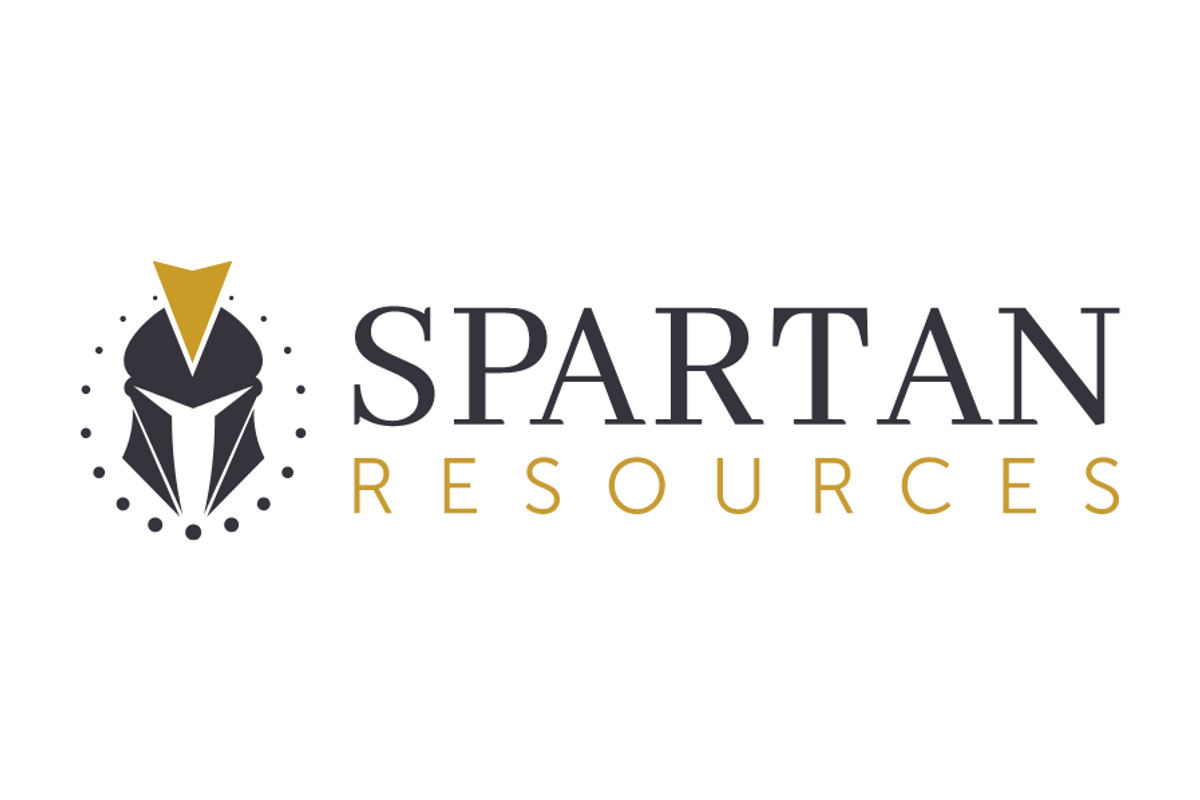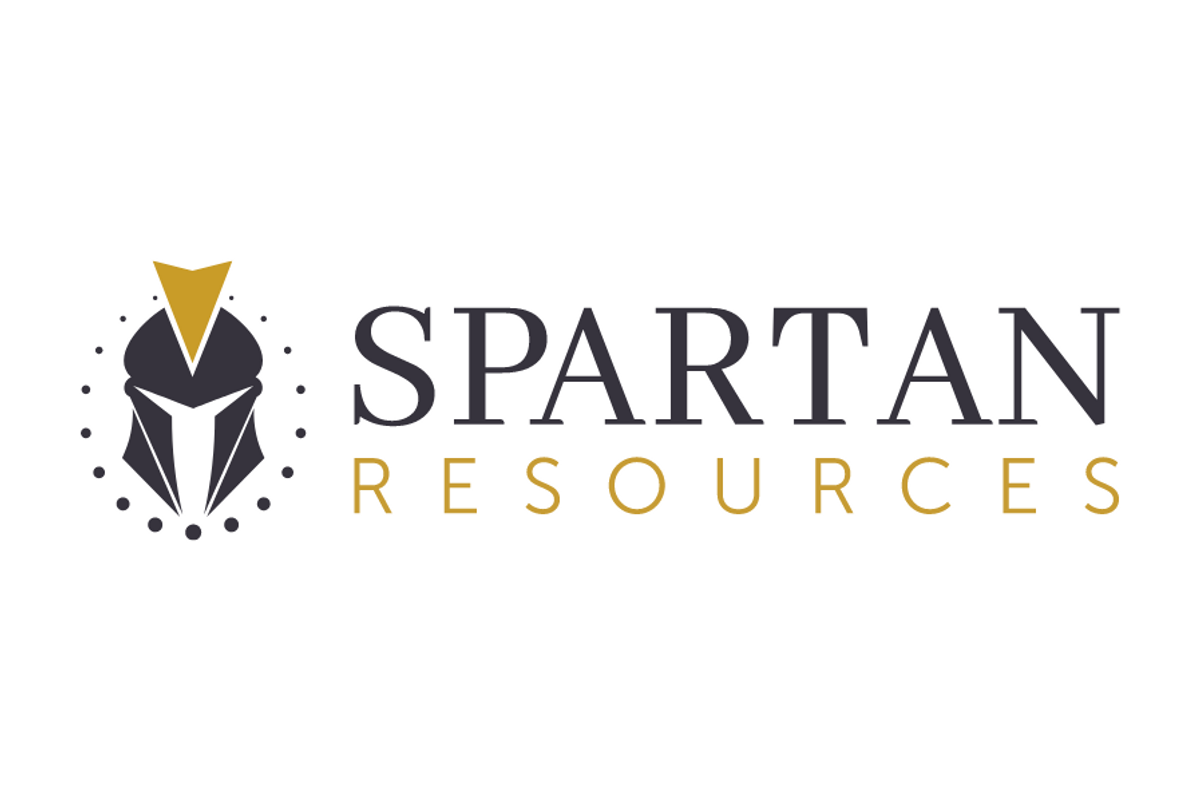
April 28, 2024
Spartan Resources Limited (Spartan or Company) (ASX:SPR) is pleased to present its Quarterly Activities and Cash Flow Report.
Exploration / Growth
- Drilling at the 952koz Never Never Gold Deposit delivered multiple exceptional high-grade gold intercepts, extending the mineralisation to over 1km depth and remaining open. Significant assays reported during the quarter included:
- 11.55m @ 36.77g/t gold from 875.0m, incl. 4.0m @ 101.07g/t (DGDH052)
- 13.00m @ 25.82g/t gold from 624.0m, incl. 4.0m @ 51.53g/t (DGRC1391-DT)
- 15.85m @ 20.23/t gold from 585.0m, incl. 2.5m @ 64.00g/t (DGRC1400-DT)
- 6.33m @ 33.72g/t gold from 561.7m, incl. 1.0m @ 114.00g/t (DGRC1305-W1)
- 18.60m @ 9.67g/t gold from 696.25m, incl. 6.05m @ 18.17g/t (DGRC1392-DT)
- 16.65m @ 10.29g/t gold from 625.83m, incl. 3.0m @ 52.03g/t (DGRC1377-DT)
- 11.04m @ 11.69g/t gold from 567.0m, incl. 2.83m @ 42.24g/t (DGDH051)
- Updated JORC-compliant “Exploration Target” completed for the Never Never Deposit, inclusive of the December 2023 Never Never Mineral Resource Estimate in March 2024 to 8.1 to 9.9 Mt at 5.8 to 6.7g/t Au for 1,600,000 to 1,900,000 ounces*.
- Outstanding assays from the West Winds and Four Pillars targets, including:
- 20.00m @ 3.49g/t gold from 322.0m, incl. 6.0m @ 7.30g/t (DGRC1422) – WW
- 19.0m @ 2.65g/t gold from 33.0m, incl. 1.0m @ 28.84g/t (DGRC1371) – WW
- 21.0m @ 3.29g/t gold from 233.0m, incl. 5.0m @ 11.01g/t (DGRC1389) – WW
- 15.0m @ 6.06g/t gold from 358.0m, incl. 3.0m @ 23.65g/t (DGDH046) – FP
- Drilling at the Sly Fox target has doubled the mineralised footprint, with assays including:
- 9.0m @ 2.67g/t gold from 228.0m (DGRC1366)
- 23.83m @ 2.44g/t gold from 379.0m, incl. 5.0m @ 5.23g/t (DGRC1382)
- An extensive drilling program is continuing, with three diamond rigs and one Aircore rig currently on site.
- Updated Mineral Resource Estimate (MRE) for the Dalgaranga Gold Project scheduled for delivery by mid-year.
Care and Maintenance (Dalgaranga)
- During the Quarter, a number of maintenance activities were completed including inspection and monitoring of key plant and other site infrastructure to ensure the Dalgaranga site remained in a state for a rapid restart.
Corporate
- Ms Deanna Carpenter appointed as an independent Non-Executive Director, with Mr John Hodder stepping down from the Board.
- Highly experienced mining executive Craig Jones appointed as Chief Operating Officer.
- Post Quarter-end, the Company launched a fully underwritten $80 million placement and accelerated entitlement offer.
- Unmarketable Parcel Share Sale Facility completed, reducing the Company’s ongoing administration costs.
- Total cash and listed company investments at 31 March 2024 of $30.5 million.
Spartan Managing Director and CEO, Mr Simon Lawson, commented:
“Spartan has continued to deliver on all fronts during the March Quarter, with more outstanding high- grade results from across the Dalgaranga Gold Project supporting our objective of delineating more high-grade ounces in front of the Project’s existing high-quality infrastructure and laying the foundations for a sustainable long-life gold business.
“Drilling at the high-grade Never Never gold deposit has continued to deliver broad intersections at very impressive grades, such as an uncut intercept of 15.85m grading 136.80g/t gold including 2.50m grading 697.00g/t gold, reinforcing the deposit’s exceptional endowment.
“Underpinned by the success of our drilling programs to date, we have recently reported an updated JORC Exploration Target for the Never Never deposit of 8.1 to 9.9 million tonnes grading between 5.8 and 6.7g/t gold for 1.6 to 1.9 million ounces of contained gold.
“We’re also continuing to see very exciting results from other deposits surrounding the Dalgaranga processing plant, with high-grade results reported from West Winds, Four Pillars and Sly Fox during the reporting period. These results will all contribute towards Our next Resource update for the Dalgaranga Project, which is scheduled for delivery by mid-year.
“With the Company now approaching a critical mass of high-grade gold ounces at Dalgaranga, we have continued to progress mining study work throughout the Quarter to consider the optimal pathway for a return to production.
“As we continue to map this pathway, we were absolutely delighted to appoint Craig Jones as our Chief Operating Officer earlier this month. Craig has an outstanding operational track record – with previous senior roles at Poseidon Nickel, Bellevue Gold and Northern Star Resources – and will be an invaluable asset to Spartan as we work to convert our exploration success into profitable production.
“We were also very pleased to welcome Deanna Carpenter to the Board during the Quarter as a Non- Executive Director. Deanna has extensive experience across equity capital markets, mergers & acquisitions, governance, risk management and corporate compliance and will be a valuable addition to our Board moving forward. We would also like to sincerely thank outgoing Director, John Hodder, who stepped down during the Quarter, for his significant contribution to the Company’s growth and development.
“Looking to the coming months, we have an incredibly busy period ahead, with four drill rigs currently on site, our next Resource update underway and feasibility studies advancing on multiple fronts.”
Click here for the full ASX Release
This article includes content from Spartan Resources Limited, licensed for the purpose of publishing on Investing News Australia. This article does not constitute financial product advice. It is your responsibility to perform proper due diligence before acting upon any information provided here. Please refer to our full disclaimer here.
SPR:AU
The Conversation (0)
03 April 2024
Spartan Resources
Focused on Growing High-grade Gold Ounces in front of established infrastructure in Prolific Western Australia
Focused on Growing High-grade Gold Ounces in front of established infrastructure in Prolific Western Australia Keep Reading...
8h
Walker Lane Announces Shares for Debt Issuance
TSX-V: WLR Frankfurt: 6YL CMC Metals Ltd. (TSXV: CMB) (Frankfurt: ZM5P) ("CMC" or the "Company") is pleased to announce that it has settled and extinguished $77,600 of outstanding debt (the "Debt") through the issuance of common shares of the Company (the "Shares"). In accordance with the... Keep Reading...
16h
Forge Resources Intersects 3.4 g/t Gold over 44.75 Metres, and 800 Metre Step-Out Discovers 1.04 g/t Gold over 55.52 Metres at Alotta, Yukon
Forge Resources Corp. (CSE: FRG) (OTCQB: FRGGF) (FSE: 5YZ) ("FRG" or the "Company"), is pleased to announce full gold assay results from drill hole ALT-25-012 at the Payoff Zone intersecting 3.4 g/t gold over 44.75 metres from 256.23 metres and discovery results from hole ALT-25-013 at the... Keep Reading...
16h
Gareth Soloway: Gold, Silver, Bitcoin and More — Price Predictions for 2026
Gareth Soloway of VerifiedInvesting.com shares his outlook for gold, silver and Bitcoin.For gold, he outlines two different scenarios — a breakout to US$5,000 per ounce, potentially early in 2026, or a pullback to the US$3,500 to US$3,600 level. Don’t forget to follow us @INN_Resource for... Keep Reading...
16 December
CMOC to Acquire Equinox Gold’s Brazilian Assets for US$1.015 Billion
China’s CMOC Group (OTC Pink:CMCLF) has agreed to buy a portfolio of gold assets in Brazil from Canada’s Equinox Gold (TSX:EQX,NYSEAMERICAN:EQX) for US$1.015 billion.CMOC said Monday (December 15) that it will acquire 100 percent of Equinox Gold’s Brazilian operations, comprising the Aurizona... Keep Reading...
16 December
Brixton Metals Reports the Balance of its 2025 Drill Results at the Trapper Gold Target
Brixton Metals Corporation (TSX-V: BBB, OTCQB: BBBXF) (the " Company " or " Brixton ") is pleased to announce updated and complete assay results from the Trapper Gold Target at its wholly owned Thorn Project in northwestern British Columbia. This release includes multi-element results for all... Keep Reading...
16 December
Walker Lane Announces Board Update
TSX-V: WLR Frankfurt: 6YL Walker Lane Resources Ltd. (TSXV: WLR,OTC:CMCXF) (Frankfurt: 6YL) "Walker Lane") announces the resignation of John Land as a Director of the Company and the appointment of Mr. Kevin Brewer, Director and CEO as interim Chairman of the Board. The Board wishes to thank Mr.... Keep Reading...
Latest News
Latest Press Releases
Related News
TOP STOCKS
American Battery4.030.24
Aion Therapeutic0.10-0.01
Cybin Corp2.140.00





